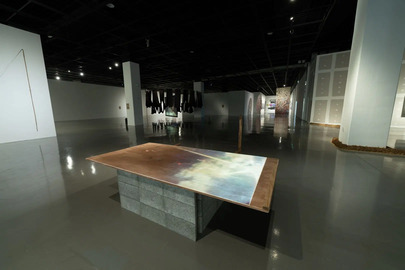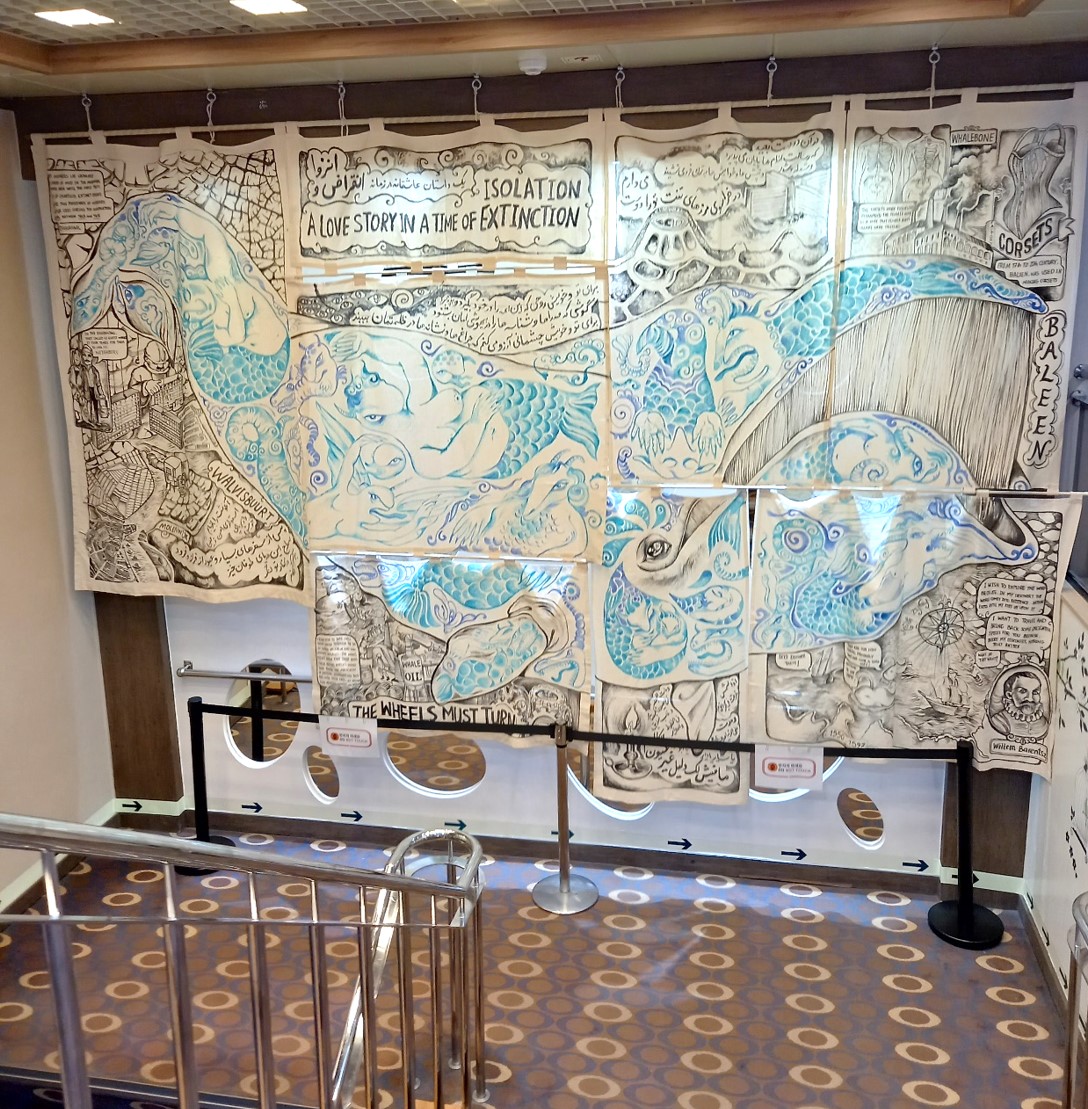 Han Meongyun, Night
Sutra, 2024, Installation view of “Seeing
in the Dark” at Busan Museum of Contemporary Art ©2024 Busan Biennale
Han Meongyun, Night
Sutra, 2024, Installation view of “Seeing
in the Dark” at Busan Museum of Contemporary Art ©2024 Busan BiennaleThe 2024
Busan Biennale, titled "Seeing in the Dark," which opened on August
17, runs until October 20 across 4 venues, including the Busan Museum of
Contemporary Art, Busan Modern & Contemporary History Museum, HANSUNG1918,
and Choryang House. The Busan Museum of Contemporary Art, the main exhibition
space of the Biennale, showcases the largest number of artworks.
At the Busan
Museum of Contemporary Art, artworks by 61 artists (or teams) are displayed
across the first and second floors, the basement, and outdoor areas. The museum
serves as a space where 'darkness' and 'light' blend, featuring artworks that
metaphorically embody darkness, as well as sensory experiences involving
hearing and touch.
Visitors
are greeted at the entrance by a large transmission tower installation. Media
artist Joe Namy has created an 8-meter-tall bamboo structure adorned with
vintage speakers that broadcast new sounds and dreams for growth and healing
through a remix of radio waves.
 Bahc Yiso, Untitled(Today),
2000(2024 reproduction), Installation
view of “Seeing in the Dark” at Busan Museum of Contemporary Art ©2024 Busan
Biennale
Bahc Yiso, Untitled(Today),
2000(2024 reproduction), Installation
view of “Seeing in the Dark” at Busan Museum of Contemporary Art ©2024 Busan
BiennaleUpon
passing the lobby and entering the exhibition hall, visitors encounter Wasp
Nest, an artwork by Carla Arocha & Stéphane Schraenen. This piece is
part of their ‘Marauders’ series, which captures morally ambiguous figures such
as thieves, pirates, and invaders, represented through hundreds of plexiglass
window-shaped sculptures that absorb various elements, including illumination
and change, to create a sense of unease within the exhibition space.
In the
basement exhibition hall, artist Tracy Naa Koshie Thompson, who works in Ghana,
visualizes the properties of different materials that change in specific ways
under environmental influences by combining Ghana's staple food, waakye, with
Korea's traditional food, napa cabbage kimchi.
On the
second floor, visitors can view works by the late artist Bahc Yiso, who passed
away shortly after participating in the 2004 Busan Biennale. Based on sketches
left behind by the artist, the re-created work Untitled (Today) involves
two surveillance cameras installed outside the exhibition hall and a projector
inside the hall, capturing the path of the sun’s movement.

























